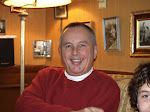Tuesday, May 1, 2018
Buster's Book Review
Read a couple good books on vacation. The first was The Warmth of Other Suns, by Isabel Wilkerson. I highly recommend it. (It was sent to me by D.W., the Old Philosopher. Thanks mucho, D.W.!)
Published in 2010, The Warmth of Other Suns follows the true life stories of three individuals to chronicle the decades-long migration of black citizens who fled the South for northern and western cities in search of a better life. From 1915 to 1970, this exodus of almost six million people changed the face of America.
An excerpt follows, describing the realities for blacks in the South in the early 20th century. (Throughout the book, Wilkerson uses the language common to each era -- colored, negro, black, African American, etc.)
___________________________________________
Younger blacks could see the contradictions in their world -- that decades after Abraham Lincoln signed the Emancipation Proclamation, they still had to step off the sidewalk when a white person approached, were banished to jobs nobody else wanted no matter their skill or ambition, couldn't vote, but could be hanged on suspicion of the pettiest infraction.
These were the facts of their lives:
There were days when whites could go to the amusement park and a day when blacks could go, if they were permitted at all. There were white elevators and black elevators (meaning freight elevators); white train platforms and colored train platforms. There were white ambulances and colored ambulances, white hearses and colored hearses.
There were white waiting rooms and colored waiting rooms in any conceivable place where a person might have to wait for something. A total of four restrooms had to be constructed and maintained in any public establishment: one each for white men, white women, colored men, and colored women.
The new bus station in Jacksonville included two segregated cocktail lounges. There was a colored window at the post office in Pensacola, and there were white and colored phone booths in Oklahoma. White and colored went to separate windows to get their license plates in Mississippi, and to separate bank tellers in Atlanta. There were taxicabs for colored people and taxicabs for white people across the region. Colored people had to be off the streets and out of the city limits by 8 p.m. in Miami Beach.
Throughout the South, the conventional rules of the road did not apply when a colored motorist was behind the wheel. If he reached an intersection first, he had to let the white motorist go ahead of him. He could not pass a white motorist on the road no matter how slowly the white motorist was going and had to take extreme caution to avoid an accident because he would likely be blamed no matter who was at fault.
In everyday interactions, a black person could not contradict a white person or speak unless spoken to first. A black could not be the first to offer to shake a white person's hand. It was against the law for a colored person and a white person to play checkers together in Birmingham. There were white-only and colored-only saloons in Georgia; white parking spaces and colored parking spaces in Mississippi. In one North Carolina courthouse, there was a white Bible and colored Bible to swear to tell the truth on.
These were the facts of their lives, carried out with soul-killing efficiency well into the 1970's.
______________________________________________
I was leaving the South
To fling myself into the unknown . . .
I was taking a part of the South
To transplant in alien soil,
To see if it could grow differently,
If it could drink of new and cool rains,
Bend in strange winds,
Respond to the warmth of other suns
And, perhaps, to bloom.
-- RICHARD WRIGHT
Subscribe to:
Post Comments (Atom)


No comments:
Post a Comment